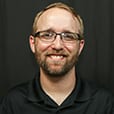
CONCORD, N.C. — Richard Childress Racing has taken the negatives about NASCAR racing in the COVID-19 era and turned them it into a positive by utilizing modern technology.
Austin Dillon and rookie Tyler Reddick led a one-two sweep for the team during the July 19 O’Reilly Auto Parts 500 at Texas Motor Speedway. The victory was in large part due to strategic pit calls that put the duo on the front row for a series of late-race restarts.
During the final caution period of the race, Dillon’s crew opted for only left-side tires, while Reddick’s team gambled on a fuel-only pit stop. That call put Dillon and Reddick in control of the race, with Dillon winning his third NASCAR Cup Series event.
One may assume that the call was made from the top of the drivers’ respective pit boxes. However, the move was put into play from the Richard Childress Racing shop in Welcome, N.C., more than 1,100 miles away.
“We have a command center at the race shop,” team owner Richard Childress explained. “That’s where I’ve been watching the races. That’s where all of our engineers and everyone calls the race from. They actually made the call from the command center to do what they did to both cars.”
Due to NASCAR’s COVID-19 restrictions that limit the number of team members who can attend races, Richard Childress Racing officials set up a command center at the team’s shop.
The command center is packed with technology and engineers who analyze all the data coming from the race track. The data allows them to better understand what’s happening on the track so they can make more educated decisions regarding adjustments and pit stops.
A computer program, dubbed “Pit Row,” that the team utilizes to analyze the circumstances prior to the final pit stop recommended that Dillon take two tires and Reddick take just fuel.
“It’s a tool that we definitely use every race day. We actually use it throughout the week in some instances, but certainly on race days,” said Dillon’s crew chief, Justin Alexander. “Technology has really kind of gone crazy in the last few years. The things that we can do now, prediction models, a lot of this stuff is statistics based.”
RCR officials had the option to ignore the computer’s recommendation but trusted the technology. It rewarded them with a one-two finish, the first such result for the team since 2011.
“Pit Row and all the technology called for what to do with both teams there at the end. It definitely paid off for us. Pit Row has been a great thing,” Childress said. “I really enjoy it. I can actually see a lot more right there than I can at the race track; actually keep up with what every other car is doing. We can listen to every other car. We know where they’re at, know their strategy, when they have to pit, how far they can go. It’s Formula One-type technology. It’s really working great.”
– Following a perplexing crash by rookie Quin Houff at Texas Motor Speedway that occurred when Houff unexpectedly changed lanes to pit and collected the cars driven by Christopher Bell and Matt DiBenedetto, Brad Keselowski spoke out about the need for a system that would allow drivers to be promoted to or demoted from the NASCAR Cup Series.
“I can’t speak enough to the gentleman (Houff) that had that issue today, but I have seen in the past where drivers that have had this issue multiple times somehow are still here, where I think they should effectively be placed in a lower series or asked to go back to a more minor league level to prove their salt,” Keselowski said. “That’s ultimately not my decision to make. It’s what I would like to see, but it’s not my decision to make and until it is, I guess I should probably just shut up, but I certainly think there’s some merit to it.”
A week later, Keselowski clarified his comments, saying they weren’t meant to offend Houff, but to identify a flaw in the NASCAR system that allows drivers to advance to NASCAR’s top level without garnering enough experience.
“I do feel like there needs to be a more official system for being promoted into the Cup Series, making sure for the future and for the credibility of the series we have the best drivers out there with the best credentials,” Keselowski said. “It’s tough because the team owners have their own business model they’re working through. I understand. In some ways the only way you can handle that is to take the option away from them of not having drivers with really proven-out credentials.
“I feel adamant that there are many national series for racing across the country, great national series, whether that’s the Truck Series, Xfinity Series, ARCA Series, K&N, beyond,” Keselowski continued. “There are great places in stock car racing. My dad once told me the great thing about motorsports is there’s a place for everybody, whether that’s the short tracks that run across all of America, or the national series.
“I think we have to be very careful to make sure everybody is racing in the right place to make the best racing for our fans and for our sport,” he continued. “When it comes to the top level, I think we’ve seen some changes there in the ability for drivers to gain access that we haven’t had in the past. I’m not a fan of that. I’d like to see a system be installed to really fix that for the future and protect the interest of the series.”
